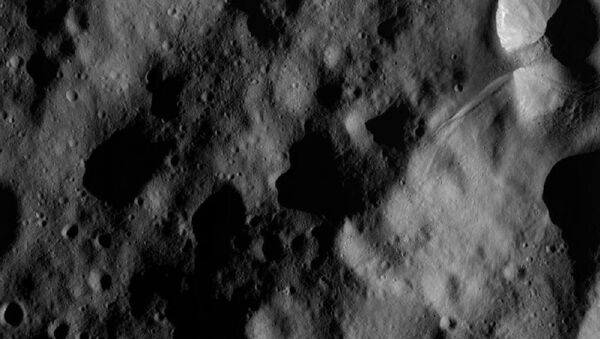WASHINGTON, June 18 (RIA Novosti) – NASA wants to send a manned mission to an asteroid as early as 2021 but needs help from citizen scientists around the world to identify a suitable space rock to land on and explore, the US space agency said Tuesday.
NASA scientists and space flight veterans invited everyone from students in Siberia to companies in Cleveland to submit ideas for NASA’s “Asteroid Grand Challenge” to help the agency complete its mission to capture an asteroid, redirect its orbit and then land a crewed flight on it.
Ideas could include how to design a high-power solar electric propulsion vehicle, which is essential for space flight beyond low-Earth orbit – such as a trip to an asteroid – or how to robotically nudge an asteroid into an orbit that would allow astronauts to land on and explore it, NASA officials said.
“International collaboration is going to be key because the problem of near-Earth asteroids is not a uniquely American problem,” Tom Kalil, deputy director for technology and innovation at the White House Office of Science and Technology, said at the official launch of the initiative in Washington.
An artist’s simulation of a mission to redirect an asteroid.
There are likely to be incentive prizes, or monetary rewards, for non-scientists whose ideas are taken up by the space agency. Suggestions on how to find the right asteroid to land on can be submitted via the NASA website beginning Tuesday.
NASA has already hashed out a three-pronged strategy for capturing an asteroid. First, the space agency will identify a suitable asteroid to capture, hoping to have that part of the challenge wrapped up by 2016, said Associate Administrator Robert Lightfoot.
The second step involves “actually going out to get the asteroid and bringing it back into trans-lunar space and put it into a more stable orbit that we can then go to the last segment, which is the exploration piece of the segment, where we go visit the asteroid,” Lightfoot said.
NASA expects to be in a position to land on an asteroid as early as 2021, depending on where the asteroid that is chosen for the Grand Challenge is.
Officials expect it will take nearly two years – 671 days-- to get to the asteroid that NASA intends to capture and study.
Kalil last year described national “grand challenges” as ambitious yet achievable goals that capture the public’s imagination and require innovation and breakthroughs in science and technology.
One such memorable project was US President John F. Kennedy’s pledge to put a man on the moon in the 1960s. President Barack Obama designated a project to map the human brain as a grand challenge in April.
By inviting input from ordinary people for the asteroid initiative, NASA is enabling citizens “to make contributions to solving these problems that we haven’t seen before,” Kalil said Tuesday.
Anyone can submit an idea via the NASA website, the space agency said, noting that asteroids can be spotted with a large telescope placed in a garden and that many asteroids have been discovered by curious high school students.

A rough timeline for NASA’s Asteroid Grand Challenge. Credit: Hillwood Art Research Library


